I would like to mention this problem is a typical constraint satisfaction problem and can be efficiency solved using the CSP module of SWI-Prolog. Here is the full algorithm:
:- use_module(library(clpfd)).
queens(N, L) :-
N #> 0,
length(L, N),
L ins 1..N,
all_different(L),
applyConstraintOnDescDiag(L),
applyConstraintOnAscDiag(L),
label(L).
applyConstraintOnDescDiag([]) :- !.
applyConstraintOnDescDiag([H|T]) :-
insertConstraintOnDescDiag(H, T, 1),
applyConstraintOnDescDiag(T).
insertConstraintOnDescDiag(_, [], _) :- !.
insertConstraintOnDescDiag(X, [H|T], N) :-
H #\= X + N,
M is N + 1,
insertConstraintOnDescDiag(X, T, M).
applyConstraintOnAscDiag([]) :- !.
applyConstraintOnAscDiag([H|T]) :-
insertConstraintOnAscDiag(H, T, 1),
applyConstraintOnAscDiag(T).
insertConstraintOnAscDiag(_, [], _) :- !.
insertConstraintOnAscDiag(X, [H|T], N) :-
H #\= X - N,
M is N + 1,
insertConstraintOnAscDiag(X, T, M).
N is the number of queens or the size of the board ( ), and
), and  , where
, where ![X_i \in [1,N]](../../images/3830123653.webp) ,
,  being the position of the queen on the line
being the position of the queen on the line  .
.
Let's details each part of the algorithm above to understand what happens.
:- use_module(library(clpfd)).
It indicates to SWI-Prolog to load the module containing the predicates for constraint satisfaction problems.
queens(N, L) :-
N #> 0,
length(L, N),
L ins 1..N,
all_different(L),
applyConstraintOnDescDiag(L),
applyConstraintOnAscDiag(L),
label(L).
The queens predicate is the entry point of the algorithm and checks if the terms are properly formatted (number range, length of the list). It checks if the queens are on different lines as well.
applyConstraintOnDescDiag([]) :- !.
applyConstraintOnDescDiag([H|T]) :-
insertConstraintOnDescDiag(H, T, 1),
applyConstraintOnDescDiag(T).
insertConstraintOnDescDiag(_, [], _) :- !.
insertConstraintOnDescDiag(X, [H|T], N) :-
H #\= X + N,
M is N + 1,
insertConstraintOnDescDiag(X, T, M).
It checks if there is a queen on the descendant diagonal of the current queen that is iterated.
applyConstraintOnAscDiag([]) :- !.
applyConstraintOnAscDiag([H|T]) :-
insertConstraintOnAscDiag(H, T, 1),
applyConstraintOnAscDiag(T).
insertConstraintOnAscDiag(_, [], _) :- !.
insertConstraintOnAscDiag(X, [H|T], N) :-
H #\= X - N,
M is N + 1,
insertConstraintOnAscDiag(X, T, M).
Same as previous, but it checks if there is a queen on the ascendant diagonal.
Finally, the results can be found by calling the predicate queens/2, such as:
?- findall(X, queens(4, X), L).
L = [[2, 4, 1, 3], [3, 1, 4, 2]]


![X_i \in [1,N]](../../images/3830123653.webp)

